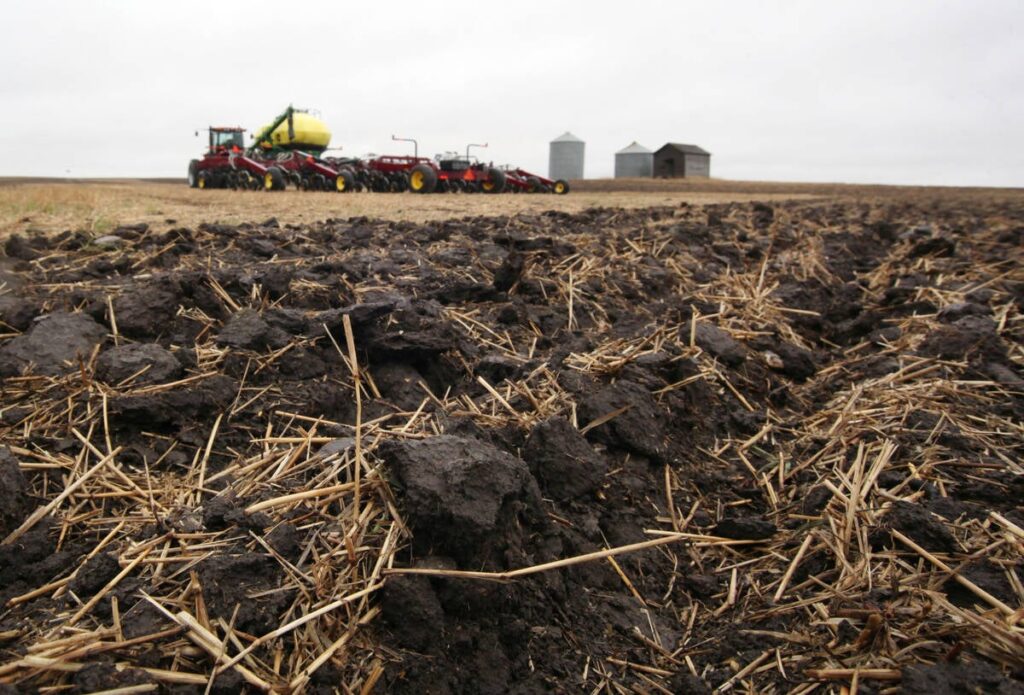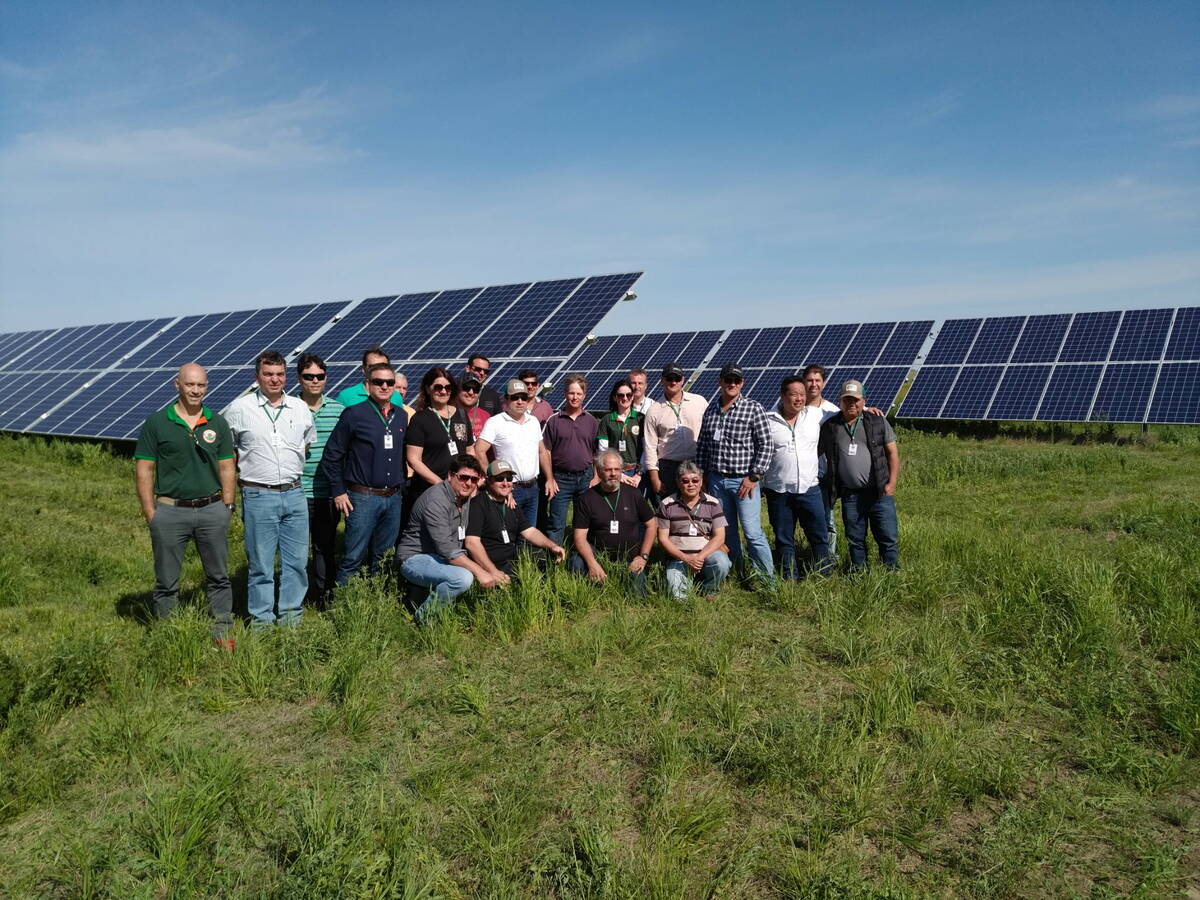Industry wrestles with regenerative certification

With producer and policy interest in regenerative agriculture growing across Canada, policymakers and industry leaders are debating how to standardize the concept without undermining its core principles or grassroots appeal.
Questions around standardization and regulation were front and centre during an April 30 webinar hosted by the Canadian Agri-Food Policy Institute.
“There is a desire for consistency, and the time to act is now,” said Catherine Tays, strategic initiatives manager with the CSA Group, a product certification and standards organization.
Read Also


Alberta irrigators put power of the sun to work
An early adopter of using solar power to operate irrigation equipment says after several years, he’s convinced the system is a win for farmers.
It recently published a report on the potential for standardization in regenerative agriculture.
“Terminology emerged as a high potential area to benefit from standardization,” Tays said.
The lack of agreed definitions has made it harder to scale adoption and communicate impact to governments, buyers and the public. Efforts to build standards that are credible without being too rigid, though, has been a wrestling match for industry.
“We don’t want to tell people what to do. We want to provide them a resource to help them do what they’re already doing or what they want to do,” Tays said.
The CSA Group’s research — done in collaboration with the Smart Prosperity Institute, a green economy think-tank — outlined five core principles of regenerative agriculture: minimizing soil disturbance, keeping soil covered, maintaining live roots, enhancing biodiversity and integrating livestock.
It also highlighted emerging principles around water use, input reduction and respect for human and non-human life.
Farmers, particularly in Canada’s Prairie provinces, are already practising regenerative techniques, even if they don’t use the label, said Tim Faveri, vice-president of global sustainability at Nutrien.
“Farmers, in North America anyway, are a little bit confused by that term ‘regenerative agriculture,’ ” Faveri said.
“We have to take a farmer-centric approach.”
Faveri once saw “add regenerative quinoa to your salad” on a menu in New York, which he believes is a sign of the buzzword’s marketing appeal but also its lack of meaning.
“We here at Nutrien … talk to our farmers and our customers on what really matters to them, and that is an approach where we can support continuous improvement through a farm management system,” he said.
For Faveri, the key is not just environmental performance, but productivity.
“The biggest thing is improving their crop yield, because that also, from a sustainability perspective, gives farmers skin in the game,” he said.
Jess Newman, senior director of agriculture and sustainability at McCain Foods, echoed the call for flexible, outcome-focused approaches, especially in a changing climate.
“There’s a clear and urgent business case to invest in farm resilience,” she said.
“Climate change is an existential threat, not only to the potato industry, but to the value proposition of being a potato grower.”
McCain has committed to having all its growers farming regeneratively by 2030. Its framework has three levels to categorize farms’ individual buy-in to regenerative agriculture.
“It allows us to be clear on what our goals are and what they mean,” Newman said.
An approach of continuous improvement is essential, she added, but defining outcomes is much harder in practice than on paper.
Jordan Sinclair, chief executive officer of ALUS, which supports initiatives such as grazing and nature-based management of marginal farmland, said her group avoids technical labels altogether.
“We don’t call it regenerative ag and we don’t call it sustainable ag,” she said.
“We just see it as being a solution provider.”
ALUS focuses on practical, community-led action rather than definitions, she added.
“(There’s the) potential for language to be off-putting to some groups, and we really find that’s true. You want to talk about carbon sequestration? You want to alienate some farmers really quickly, start talking in those terms.”
Social support is essential to driving real change, Sinclair added. ALUS has found that communities learn from farmers and create a safe environment where people can ask questions about new things and try to learn.
McCain is investing in similar peer-to-peer learning cohorts, recognizing that farmers often need community and mentorship to adopt new practices, Newman said.
“There’s pretty well-established data that if you’re in a minority of any kind … you feel like an outsider,” she said.
“We’ve tried to be intentional about, OK, how are we normalizing these conversations? How are we helping growers network with each other?”
The idea of a tiered system is gaining broader support in the conversation about certification for regenerative agriculture.
“I think tier base is definitely something that … emerged through this research of being a very viable pathway,” said Tays.
Still, questions remain about how to balance rigour with accessibility. Regenerative agriculture certification must provide value to farms, Faveri said.
“If it can help with bolstering and reducing risk … that’s good.”
Tia Loftsgard, executive director of the Canada Organic Trade Association, warned that new labels must not repeat the confusion of the past. She pointed to her own sector’s brush with logo overload.
“(Before), there were 70 organic logos, which represented 70 different standards, right? Thank God we have one now,” she said.
“I love the fact that people are thinking about, ‘what is this term?’ and how … it should be used.”
Another obstacle is that not all farmers can afford or would benefit from formal certification, especially smaller producers.
“We don’t want to see people excluded from a system because if they’re doing the practices, they should be able to make the claim,” Loftsgard said.
As regenerative agriculture continues to gain traction, panelists agreed that the term must be protected from misuse, but should also not turned into a bureaucratic obstacle.
“I think what our key learning has been is that flexibility to address actual local context is really critical when talking about standards,” Newman said.
In the end, standards must be seen as tools that help achieve a goal.
“We don’t want to reinvent the wheel,” Tays said.
“We are always looking to see what can we learn from what’s been done internationally and what’s being done in Canada?”
Source: www.producer.com


